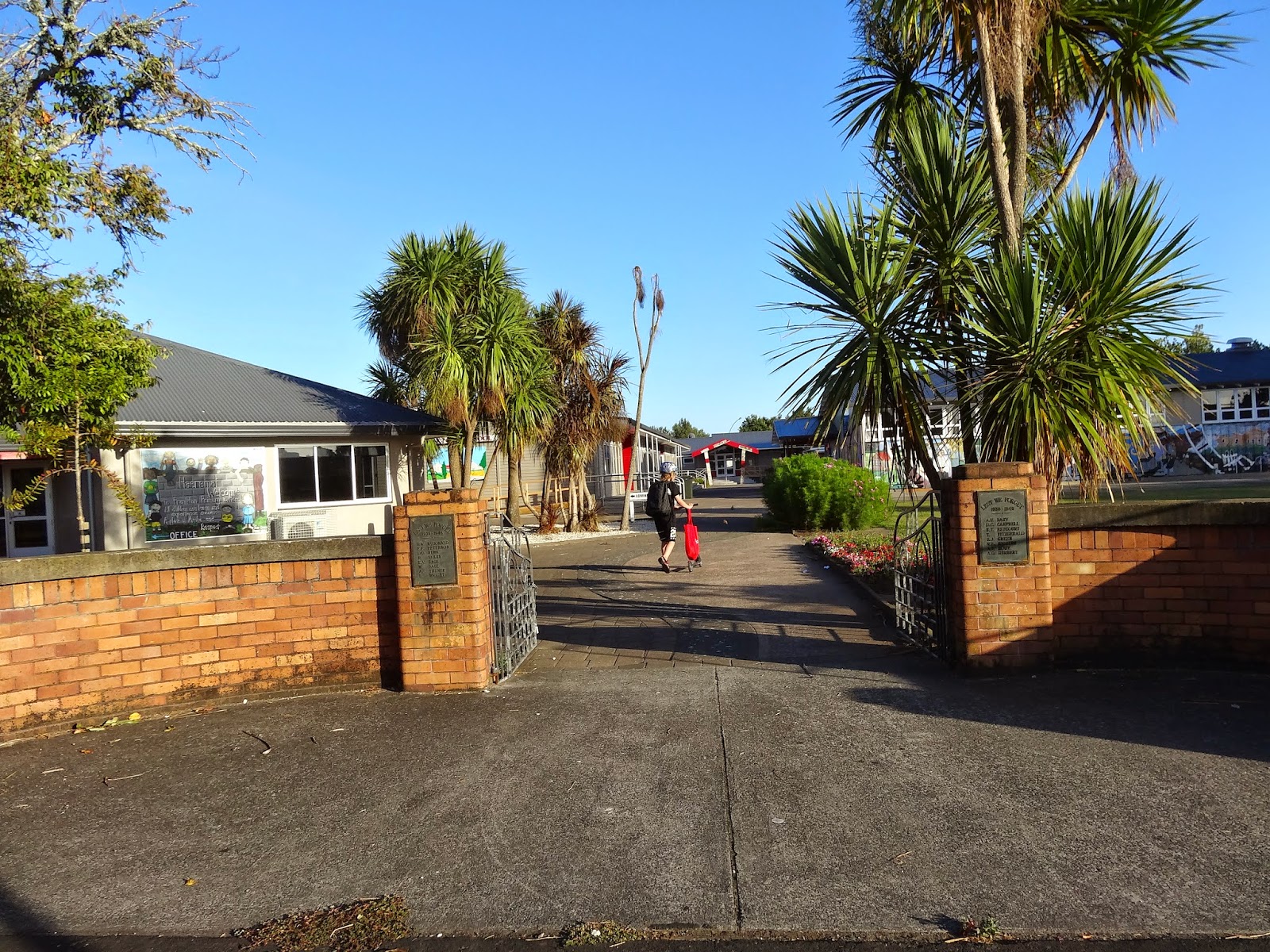Over the last couple days I have had the privilege of being
introduced to my new school and students here in New Zealand. It all started
Monday morning when Denise took me in to her office at Waikato University to
meet with her boss Mark. Mark is the head of the student teacher placement
department and was kind enough to set up the meeting to get me familiarized
with the NZ school system and curriculum.
I was very intrigued by many of the things that Mark told me
about how things are run. In NZ they do not have school districts the way we
do. The NZ government sets standards and (to a degree) curriculum, but then
each individual school acts separately with its own individual board of
trustees. They are somewhat akin to charter schools within the US.
In addition, NZ’s funding structure is also rather
different. Each school is given a decile ranking based on the average family
income, wealth of the area, and types of employment within the school’s
boundaries. Lower SES means a lower decile and higher SES means a higher
decile. Low decile schools then receive the most funding from the government
and higher decile schools receive less since parents are able to contribute
more to their own schools.
One last thing I found interesting is that in NZ students
start school on their 5th birthday. Instead of there being a
“cut-off” they join the school as a “New Entrant” right at age five and attend
a special room in the school until they are ready to move to the main school
grades.
After
meeting with Mark, we went to the school where they took me through a traditional
Maori welcome ceremony called a Powhiri. At the beginning I waited by the
entrance to the school grounds until one of the female faculty members called
to me in Maori to invite me in. As I entered, I was led to the school hall
where the students were singing in Maori as I was seated. Then Mark and one of
the male faculty members did an exchange where they spoke back in forth in
Maori. Mark told me beforehand that they would be exchanging information about
the school and myself and that the faculty member from the school would formally
extend me an invitation to join their school. In between their exchanges the
student body sang traditional Maori songs. It was really neat and special and I
felt really honored and welcomed by everything they had put together.
Entrance to School Grounds
I have
discovered since then that including teaching about Maori culture and language
is part of the national curriculum. At Frankton, where I am, the teachers are
all required to teach the students Maori songs and poems, most signs include
both languages and the teachers themselves will often give simple instructions
(such as “sit down” or “line up”) in Maori instead of English. I have found it
to be a really neat experience to see how they blend the traditions and
heritage of the Maori people into their everyday school experience.
The Students' "Mihi". Everyday one student takes a turn presenting it to the class. It is a Maori way of describing one's genealogy or place within the community.
I have
found many other things about their schools that are fun and different from the
US. For example, at Frankton shoes generally seem to be optional. Most students
take them off in the morning and leave them in their cubbies until they leave
in the afternoon. None of the teachers seem to care and the students all seems
very used to it. Also their school is built very differently. Instead of one
big building their campus is made of several small building that house
different age groups as well as a building for the library and one for the
assembly hall. In between most of the buildings are large grassy areas for
students to run around and play in. I have also noticed that many of the
architectural aspects that I noticed in Denise’s home stay true such as their
propensity for having lots of large windows.
My Classroom
Play Area and Other Buildings
One
thing I found interesting in their curriculum is that swimming is an almost
compulsory part of elementary education. At Frankton (and, from what I've
heard, most schools) they have their own swimming pool and every day each class
is required to go out for 20 minutes and learn and practice swimming. It makes
sense when you remember that they live surrounded by ocean, but it is still
very different to think that I have to make it a part of my day.
Lastly,
I thought I would bring up that in the morning they have a half hour break that
they call “morning tea time”. The students are released to play and have a
snack while the teachers are invited into the staff room. There the school
provides mugs, milk, and hot water (which comes from an installed water heater
just for this purpose), and the choice of coffee, tea, or Milo (a malted barley
drink) for the teachers to enjoy. I think it is a really fun idea and I get the
feeling that I will enjoy it a lot during my time here (especially when they
provide cookies as well)!





No comments:
Post a Comment